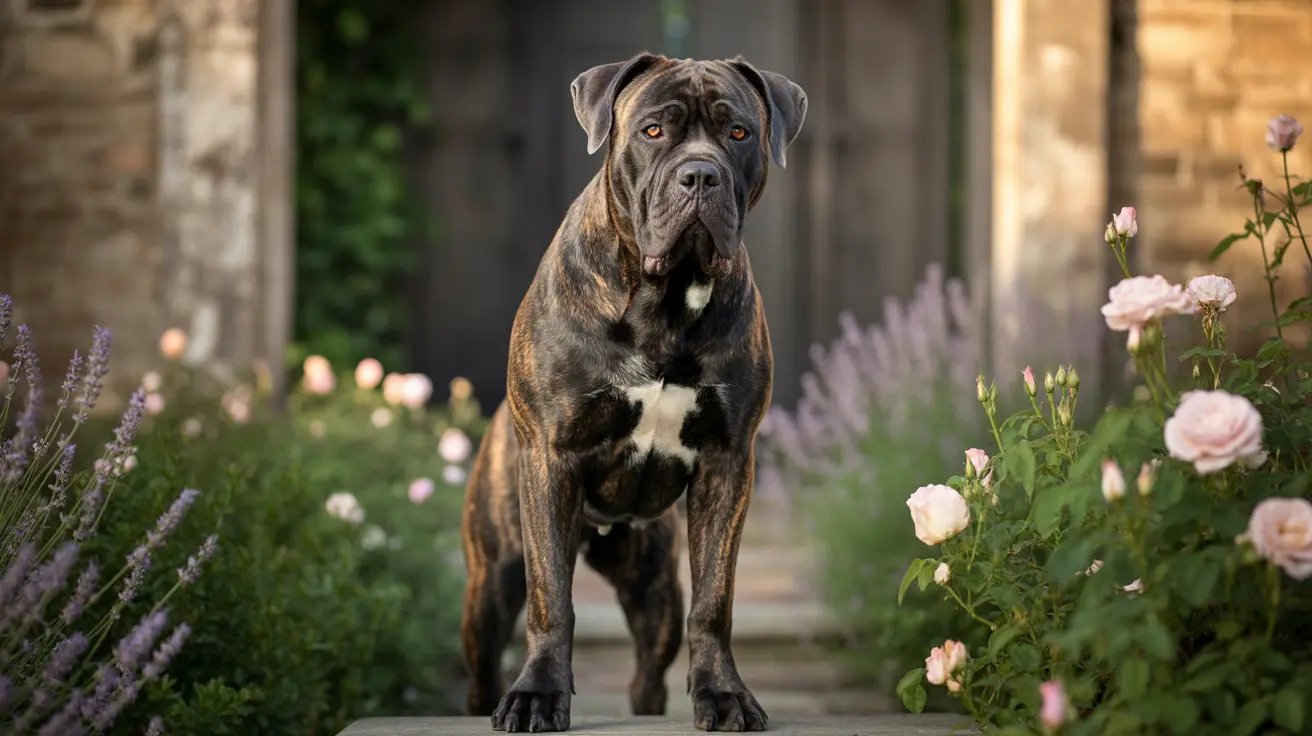The Cane Corso, a majestic Italian mastiff breed, displays an impressive array of coat colors that contribute to its striking appearance. From deep blacks to vibrant reds and distinctive brindle patterns, each color tells a story of the breed's rich heritage and genetic makeup.
Whether you're a potential owner, breeder, or enthusiast, understanding Cane Corso colors is essential for appreciating these remarkable dogs. Let's explore the complete spectrum of officially recognized colors, their genetic foundations, and what makes each shade unique.
Standard AKC-Recognized Cane Corso Colors
The American Kennel Club officially recognizes five main coat colors for the Cane Corso:
Black
The classic black Cane Corso showcases a deep, rich coat that exudes power and presence. These dogs may have small white markings on the chest or toes, but the coat should be uniformly black throughout. Historically, black Corsos were favored by Italian farmers for their intimidating appearance.
Gray (Blue)
Gray Cane Corsos, sometimes referred to as "blue," display coats ranging from light silver to dark slate. This coloration results from a dilution gene affecting black pigmentation. True gray Corsos are relatively uncommon due to the genetic requirements for this color expression.
Fawn
Fawn Corsos exhibit warm tan to golden coats, typically accompanied by a black or gray facial mask. The breed standard specifies that this mask should not extend beyond the eyes. Fawn coloring results from a diluted red pigment gene and creates a sophisticated, elegant appearance.
Brindle
Brindle Cane Corsos feature distinctive stripe patterns overlaying various base colors. These stripes can appear in different intensities and combinations, including:
- Black brindle
- Gray brindle
- Chestnut brindle
Red
Red Cane Corsos display rich, warm coats ranging from copper to mahogany tones. Like fawn dogs, they often feature black or gray facial masks. This coloring requires specific genetic combinations and creates a striking appearance that turns heads.
Rare and Non-Standard Colors
Beyond the standard colors, several rare and non-standard variations exist:
Formentino (Blue Fawn)
This unique color combination results from double dilution genes, creating a washed-out fawn appearance with a blue-gray overlay. While beautiful, this color is less common and may not be accepted in show rings.
Chocolate and Isabella
These colors fall outside breed standards and are generally discouraged by responsible breeders. They result from specific genetic combinations that deviate from traditional Cane Corso coloring.
Genetic Factors and Health Considerations
Color inheritance in Cane Corsos follows complex genetic patterns involving multiple genes and alleles. Understanding these patterns is crucial for responsible breeding:
- The K locus determines black, brindle, or fawn base colors
- The D locus controls color dilution (creating gray/blue variants)
- The E locus influences mask presence and expression
Some color variations may carry health implications. For example, dogs with dilute colors (particularly gray) may be more susceptible to color dilution alopecia, though this condition is less common in Cane Corsos than in other breeds.
Show Standards and Breed Recognition
For show purposes, Cane Corso colors must adhere to strict standards:
- White markings should be minimal and confined to specific areas
- Facial masks must not extend beyond the eyes
- Disqualifying colors include black and tan, chocolate, and merle patterns
Frequently Asked Questions
What are the officially recognized coat colors for Cane Corsos according to the AKC?
The AKC officially recognizes five main colors: black, gray (blue), fawn, brindle, and red. Each of these colors must meet specific standards regarding intensity, pattern, and markings.
How does genetics determine the variety of colors and patterns in Cane Corsos?
Color inheritance is controlled by multiple genetic loci, primarily the K, D, and E loci. These genes interact to produce the various colors and patterns seen in the breed, with some combinations being more common than others.
Which Cane Corso colors are considered rare or non-standard by breeders and dog clubs?
Rare colors include formentino (blue fawn) and various brindle combinations. Non-standard colors like chocolate, isabella, and black and tan are typically discouraged and may be disqualified in shows.
Are certain Cane Corso colors linked to specific health risks or genetic issues?
Dilute colors, particularly gray/blue, may have an increased risk of color dilution alopecia. However, this condition is less prevalent in Cane Corsos compared to other breeds with similar coloring.
How do coat color and patterns affect Cane Corso breed standards and show eligibility?
Coat colors must meet specific AKC standards for show eligibility. This includes proper mask placement, acceptable white marking locations, and the absence of disqualifying colors or patterns.
Understanding Cane Corso colors goes beyond mere aesthetics—it's about appreciating the breed's heritage, genetics, and health considerations. Whether choosing a companion or breeding these magnificent dogs, color knowledge helps ensure the preservation of proper breed characteristics for future generations.






